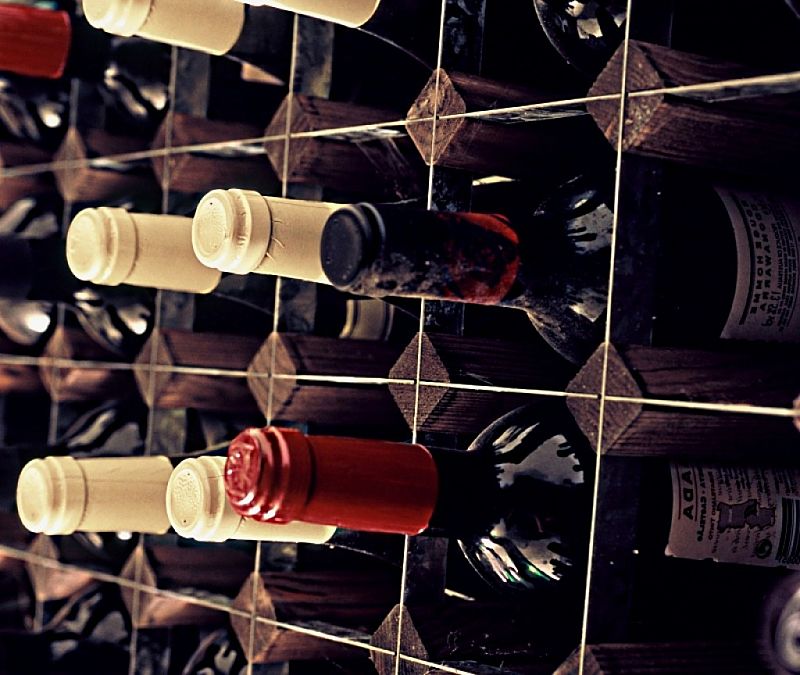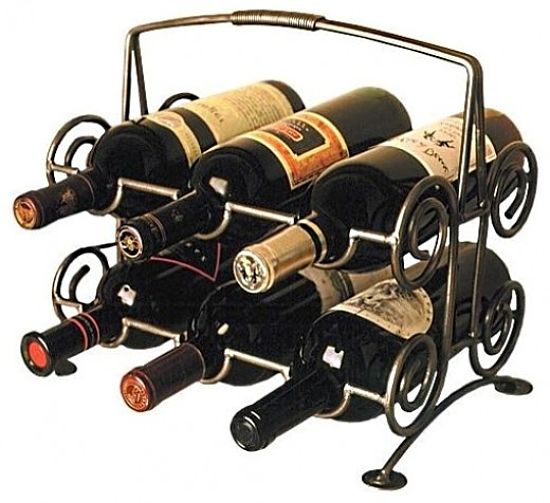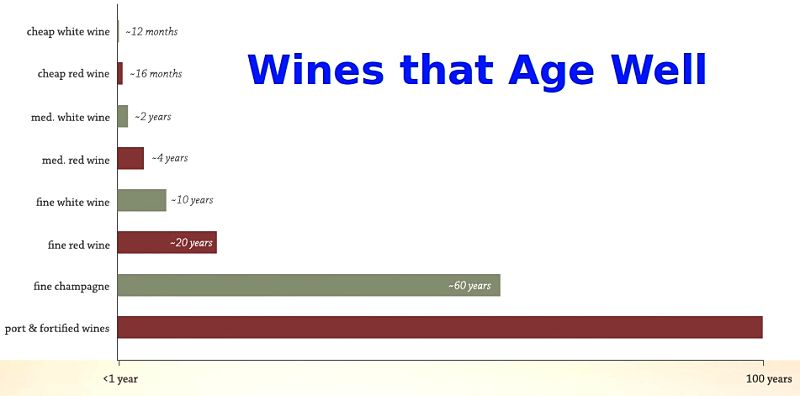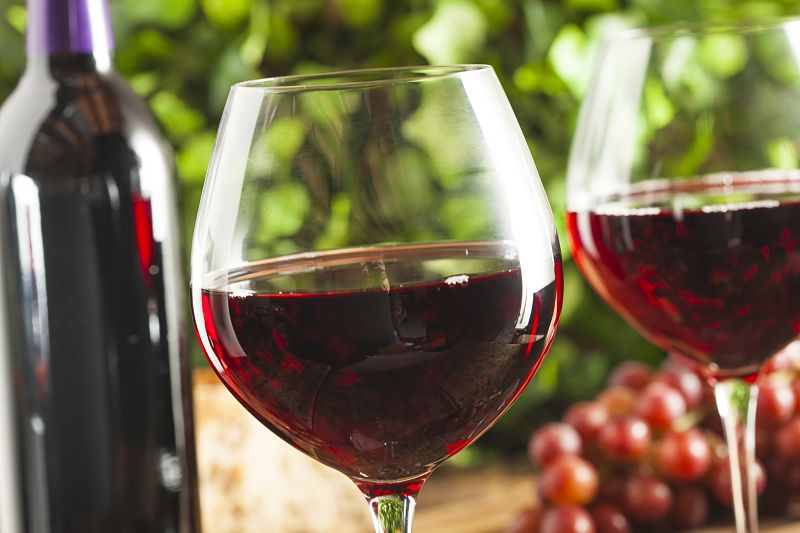Which Wines are Worth Cellaring and Aging Before Drinking
What has happened to that delightful tradition of buying up cheap good quality young wines and aging them in your cellar at home, where they accumulate dust and cobwebs, and develop enhanced complexity and smoothness as the wine ages in the bottles?
The great tradition of going down into the cellar to choose a fabulously aged and cellared wine for special guests, from a deep dark corner somewhere in your cellar, seems to have faded into a memory or times past.
Or has it? Is cellaring wines still worthwhile? If so, which types of wines would still benefit from being set aside in a cellar to allow them to reach their peak in terms of taste, texture and terroir?
This article discusses whether cellaring and bottle-aging of wines is worthwhile the time and expense, anymore. What are the risks and benefits? What are the ideal conditions?
Most importantly, which wines would benefit from cellaring.
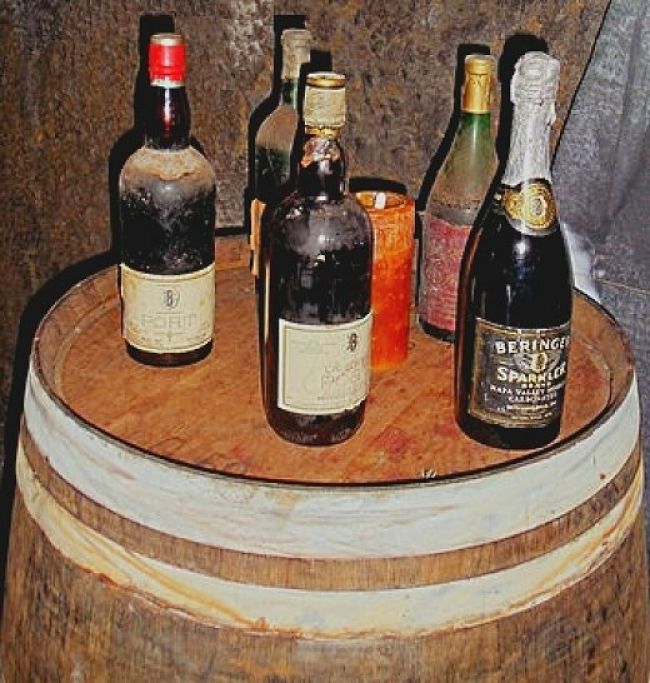
Do Wines need to be Aged?
The need to age and mature wine to potentially improve the quality and taste of wine separates wine from most other consumable goods except for cheese and some processed meats. Wine can deteriorate in the bottle through 'corking'. But corks are no longer used for most wines.
However, wines can simply get too old and past their peak and so there are risks of doing more harm than good.
Very young wines, that have just been bottled, undergo a series of complex chemical reactions in the bottle over time. There are a series of complex reactions between the acids, sugars and phenolic compounds (such as tannins) in the wine that change the aroma, color, taste, texture and feel of the wine in the mouth. There is a peak time when the wine is at its best.
Aged wines not only taste better, but they are smoother, with the rough edges smoothed away.
The ability of a particular wine to benefit from aging and cellaring depends on the grape variety, viticultural practices, vintage, cellaring within the winery, the wine region and terroir, and winemaking style.
The conditions where the wine is cellared is also critical to whether the aging will be effective.
Low and stable temperature appear to be very important and may require expensive facilities and investment on an appropriate home cellar. The time and expence need to be worthwhile in terms of the expected benefits.
Is Aging and Cellaring of Wines Still Required?
Most wine experts agree that aging and cellaring is not as beneficial or worthwhile as it used to be. But the are still enthusiastic advocates for its merits. The processing of wine has improved so much that most wine is ‘at its peak’ when you buy it. Sometimes, various chemical processes are used to create the ‘aging’ and matring of the wine artificially. Though most produces won't admit that this happens. A lot of wines are stored in the wineries in huge stainless steel vats or in bottles, so they will be at their best when released. Mosern stoarge and processing of wines is now much better than it used to be.
On the other hand, the elimination of corks has mean that the lottery of risks, that wines will be ‘corked’, when aged has largely disappeared. There are less risks with cellaring wines in plastic enclosure. Some more expensive wines are still bottled with corks and some wine buffs still believe that the corks allow air to gradually leach into the wine over a long period of time offering almost ‘magical’ improvements.
Most experts suggest that only the top 5% of all white wines and 10% of all red wines will improve enough with age to make them more enjoyable after 5 years of aging.
Only 1% of wines will be significantly better after cellaring for 10 years. But opinions and attitudes differ very widely.
There is also the opposite view that many wines are too old when consumed and that aging causes loss of the fruitiness and sparkle of wines that have been in the bottles for 6 months or so.
The age of the wine, and the time it has been in the bottle, are great marketing ploys that may or may not be true.
Which Wines Would Benefit from Cellaring and Aging in the Bottle?
The table below provides general advice on the more common recommendations.
Tips and General Advice
- Wines with a low pH (such as Sangiovese and Pinot noir and) are more capable of benefiting from aging.
- Red wines with intense flavours and complexity and strong tannins and other phenolic compounds can benefits from cellaring.(Cabernet Sauvignon, Shiraz, Nebbiolo and Syrah)
- White wines with aging potential are those with strong tastes and moderate to high acidity. White wines generally have lower phenolic compounds which are derived from the grape skins. However, barrel fermentation and oak barrel aging can add some phenols and aging tends to smooth out the rough edges.
- Most barrel-aged Ports, Sherries, Vins de liqueur, Vins doux naturels are ready to be consumed when purchased. The same applies to Ice wines and sparkling wine varieties.
- Most cheaper brands of wines will not improve with cellaring.
- Some Vintage Ports, and other bottled-aged Sherries and Ports and Vintage Champagne and Sparking Wines can benefit from additional aging.
- Very old wines are often disappointing and may have past their prime. Cheap old wines may not be a bargain.
Tips for Proper Storage of Wine
The storage conditions, environment and location where the bottled wine is cellared will profoundly affect the outcome of the aging processes.
The six key attributes are Stability absence of vibrations, and stable low temperatures.
- The lower the temperature, the more slowly a wine develops and ages, and the more slowly it deteriorates if wines are just kept in storage. High temperatures can hasten the deterioration of wine. The ideal temperature or aging wine and long-term cellaring is 55 degrees F (13 degrees C).
- The maximum temperature for long term storage (not necessarily for maturing or improving the wine) is 69 degrees F (20 degrees C).
- Temperature over 120 degrees F (49 degrees C) for a few hours may permanently damage wines.
- Avoiding large temperature fluctuations appear to be detrimental to the wine. Keeping wines in a stable temperature, both daily and seasonally appears to be very important.
- Avoiding the ultra-violet rays of direct sunlight is also important.
- Humidity used to be a problem with wines closed with corks. However, this and other factors likely to dry out or damage the corks have become less important as most wines no longer have corks.
Conclusion:
Modern wines are far more drinkable and in peak condition and maturity when you buy them compared with 20 years ago. Cellaring may be beneficial for very expensive wines, but only if you have ideal cellaring conditions. Changing you location from a temperate to a tropical region can be disastrous for a wine lover’s collection of cellared wines.
Types of Wines and Cellaring Potential
|
Little to no aging potential
|
Good aging potential
|
Time period in Years
|
|---|---|---|
|
All Nouveau wines
|
Aglianico from Taurasi
|
(4–15 yrs)
|
|
American jug, box wine, casket wines
|
Botrytized wines
|
(5–25 yrs)
|
|
Asti and Moscato Spumante
|
Baga from Bairrada
|
(4–8 yrs)
|
|
Basic Sherry
|
Bulgarian Melnik
|
(3–7 yrs)
|
|
Branded wines like Yellow Tail, Mouton Cadet, etc.
|
Cabernet Sauvignon
|
(4–20 yrs)
|
|
European Table Wine
|
Chardonnay
|
(2–6 yrs)
|
|
German QBAs
|
Classified Bordeaux
|
(8–25 yrs)
|
|
Inexpensive varietals (with the possible exception of Cabernet Sauvignon)
|
Croatian Plavac Mali
|
(4–8 yrs)
|
|
Majority of Vin de pays
|
Georgian Saperavi
|
(3–10 yrs)
|
|
Rosé and blush wines like White Zinfandel
|
Grand Cru Burgundy
|
(8–25 yrs)
|
|
Tawny Ports
|
Greek Xynomavro
|
(4–10 yrs)
|
|
Vermouth
|
Hungarian Furmint
|
(3–25 yrs)
|
|
|
Hungarian Kadarka
|
(3–7 yrs)
|
|
|
Hunter Valley Semillon
|
(6–15 yrs)
|
|
|
Loire Valley Chenin blanc
|
(4–30 yrs)
|
|
|
Madiran Tannat
|
(4–12 yrs)
|
|
|
Merlot
|
(2–10 yrs)
|
|
|
Nebbiolo
|
(4–20 yrs)
|
|
|
Pinot noir
|
(2–8 yrs)
|
|
|
Riesling
|
(2–30 yrs)
|
|
|
Sangiovese
|
(2–8 yrs)
|
|
|
Spanish Tempranillo
|
(2–8 yrs)
|
|
|
Syrah (Shiraz)
|
(4–16 yrs)
|
|
|
Zinfandel
|
(2–6 yrs)
|
